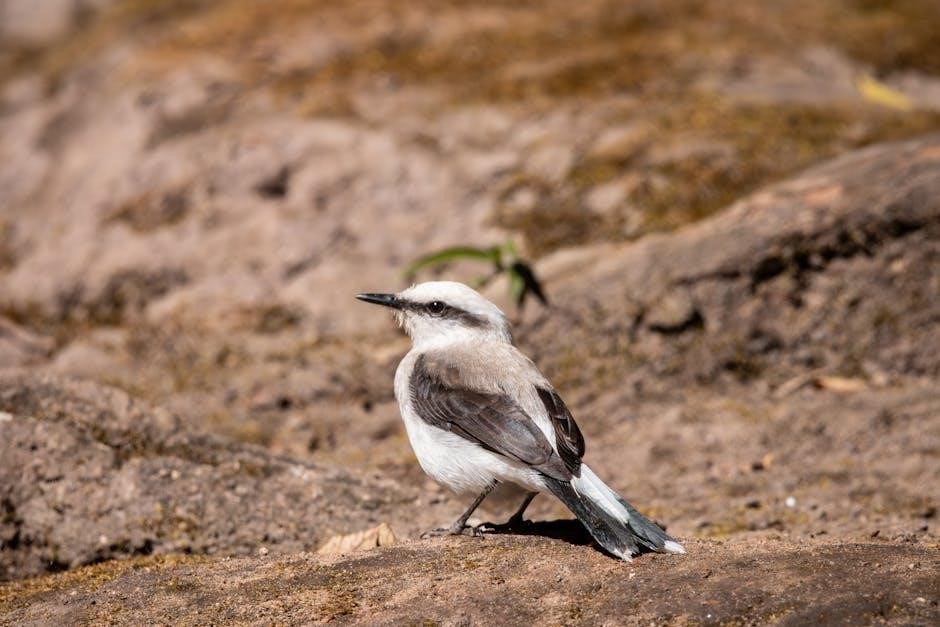
mossback guides
Mossback Guides are a cherished resource, offering insights into the natural and cultural heritage of the Pacific Northwest, available on PBS and the PBS App, serving as a bridge between history, ecology, and community engagement.
Overview of Mossback Guides
Mossback Guides are a cherished resource for exploring the Pacific Northwest’s rich history, ecology, and cultural heritage. They provide in-depth insights into the region’s unique landscapes, wildlife, and traditions. Available on platforms like PBS and the PBS App, these guides are accessible to a wide audience. They cover topics ranging from biodiversity to historical milestones, offering a comprehensive understanding of the region. Mossback Guides serve as a bridge between the past and present, fostering a deeper connection to the natural and cultural world of the Pacific Northwest, while inspiring stewardship and appreciation for its unique treasures.

Historical Background and Origins
Mossback Guides trace their origins to the Pacific Northwest, a region rich in natural beauty and cultural heritage. The term “mossback” reflects the area’s lush, moss-covered landscapes. Historically, these guides were developed to document and preserve the region’s unique biodiversity, traditions, and history. They draw inspiration from indigenous knowledge and early European explorers’ accounts. Over time, Mossback Guides evolved into comprehensive resources, blending storytelling with factual information. Today, they are celebrated for their role in educating audiences about the Pacific Northwest’s ecological and cultural significance, making them a vital tool for both locals and visitors seeking to understand this extraordinary region.
Importance of Mossback Guides in Modern Context
Mossback Guides serve as a vital resource for understanding the Pacific Northwest’s natural history and cultural heritage. They bridge the gap between traditional knowledge and modern environmental concerns, offering insights into biodiversity and sustainability. By documenting the region’s unique ecosystems, Mossback Guides educate audiences about conservation efforts and ecological preservation. Their availability on platforms like PBS ensures accessibility, making them a valuable tool for educators, researchers, and enthusiasts alike. In today’s context, Mossback Guides not only preserve history but also inspire stewardship of the region’s fragile environments, fostering a deeper connection between people and the natural world for future generations.

History of Mossback Guides
Mossback Guides emerged as a unique resource, evolving over time to document the Pacific Northwest’s natural history and cultural heritage, growing into a comprehensive guide for regional exploration.
Evolution Over Time
Mossback Guides have transformed from traditional field guides to comprehensive digital resources, blending historical insights with modern multimedia. Initially focused on regional flora and fauna, they now incorporate cultural narratives, ecological data, and community stories. The integration of visual and interactive elements has enhanced their accessibility, making them indispensable for both researchers and enthusiasts. Their evolution reflects a commitment to preserving the Pacific Northwest’s heritage while adapting to contemporary educational needs, ensuring their relevance in an ever-changing world.
Key Milestones in Development
The development of Mossback Guides marked significant progress with the launch of Mossbacks Northwest on PBS, expanding their reach through digital platforms. The integration of multimedia elements, such as interactive maps and storytelling, revolutionized their accessibility. Collaborations with regional experts and communities further enriched their content, ensuring authenticity and depth. These milestones underscore their commitment to blending tradition with innovation, making them a vital resource for understanding the Pacific Northwest’s ecological and cultural landscape.
Historical Figures Associated with Mossback Guides
Notable figures like Dr. Madeline Mra and Dr. Euftnc H. Dmvla have contributed to the evolution of Mossback Guides, blending scientific expertise with local traditions. Their work, alongside regional storytellers and explorers, has shaped the guides’ content, ensuring a deep connection to the Pacific Northwest’s history and ecology. These individuals have played pivotal roles in preserving cultural heritage while fostering innovation in educational resources.
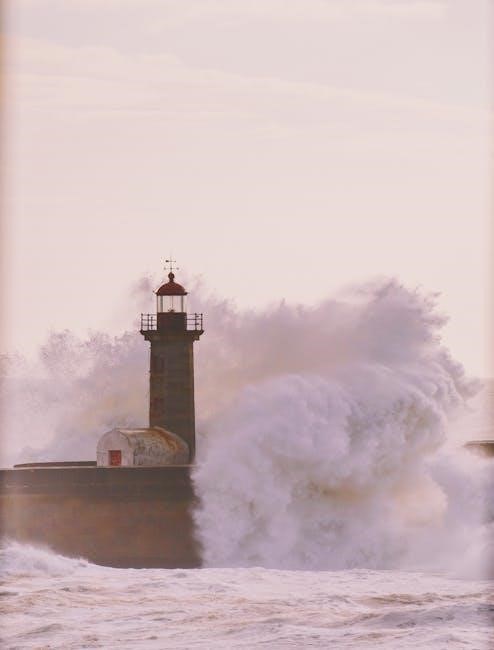
Cultural Significance of Mossback Guides
Mossback Guides hold profound cultural value, connecting communities to the Pacific Northwest’s rich history and biodiversity while celebrating local traditions and fostering regional pride and environmental stewardship.
Mossback Guides in Folklore and Mythology

Mossback Guides are deeply rooted in the folklore and mythology of the Pacific Northwest, symbolizing a connection to the region’s natural and cultural heritage. These guides often appear in local legends, embodying wisdom, resilience, and a profound understanding of the land. Stories depict them as guardians of ancient traditions, preserving the history and biodiversity of the area. Their role in folklore highlights the importance of storytelling in passing down ecological knowledge and cultural values. By weaving tales of the land, Mossback Guides inspire a sense of stewardship and respect for the environment, making them timeless figures in regional mythology and identity.
Role in Regional Identity and Tradition
Mossback Guides play a pivotal role in shaping the regional identity of the Pacific Northwest, serving as a cornerstone of cultural heritage. They embody the values of resilience, resourcefulness, and deep connection to the land, reflecting the unique character of the region. These guides are integral to local traditions, preserving historical practices and fostering a sense of community. Their influence extends beyond ecology, contributing to the cultural fabric by inspiring art, literature, and storytelling. As timeless symbols of regional pride, Mossback Guides continue to nurture a shared sense of belonging and stewardship among both residents and visitors;
Impact on Local Communities
Mossback Guides have a profound impact on local communities, fostering environmental stewardship and cultural preservation. By sharing knowledge of the region’s biodiversity and historical traditions, they empower residents and visitors alike to appreciate and protect the area’s unique heritage. This fosters a sense of community pride and responsibility. Additionally, Mossback Guides contribute to eco-tourism, supporting local economies through sustainable practices. Their efforts promote educational initiatives, ensuring the preservation of regional traditions for future generations. This dual focus on ecology and culture strengthens social bonds, making Mossback Guides a vital asset to the communities they serve.
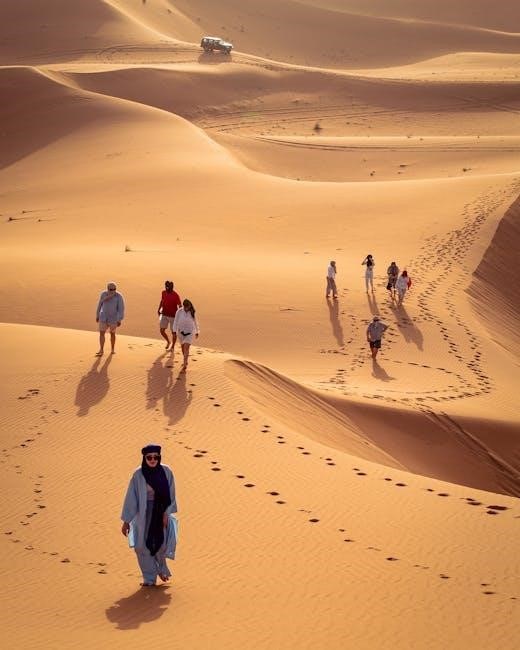
Environmental and Ecological Aspects
Mossback Guides highlight the importance of biodiversity and ecological balance, emphasizing sustainable practices to preserve natural habitats and promote environmental stewardship in the Pacific Northwest region.
Mossback Guides and Biodiversity
Mossback Guides play a vital role in preserving biodiversity by documenting and promoting the unique ecosystems of the Pacific Northwest. They emphasize the interconnectedness of species and habitats, highlighting the importance of conservation efforts to maintain ecological balance. By focusing on native flora and fauna, these guides raise awareness about the region’s natural heritage, encouraging sustainable practices to protect endangered species and their environments. Their work not only educates the public but also supports initiatives aimed at restoring and safeguarding biodiversity for future generations.
Ecological Challenges Faced by Mossback Guides
Mossback Guides encounter significant ecological challenges, including habitat degradation, climate change, and invasive species. These factors threaten the biodiversity they aim to preserve. Rising temperatures and altered rain patterns disrupt ecosystems, while urban expansion and logging reduce natural habitats. Invasive species further destabilize native flora and fauna, complicating conservation efforts. Pollution from industrial activities also endangers aquatic life, impacting the guides’ ability to document and protect these environments. Addressing these challenges requires collaborative efforts to restore balance and ensure the survival of the region’s unique biodiversity for future generations.
Conservation Efforts and Sustainability
Mossback Guides actively promote sustainability through targeted conservation efforts, focusing on preserving the Pacific Northwest’s ecosystems. Collaborative initiatives include habitat restoration, species monitoring, and public education campaigns. These actions aim to mitigate threats like deforestation and pollution while fostering environmental stewardship. By engaging local communities, Mossback Guides encourage eco-friendly practices, ensuring the region’s biodiversity thrives. Their work highlights the importance of balancing human activity with ecological preservation, offering a model for sustainable resource management and inspiring future generations to protect these vital natural spaces for years to come.
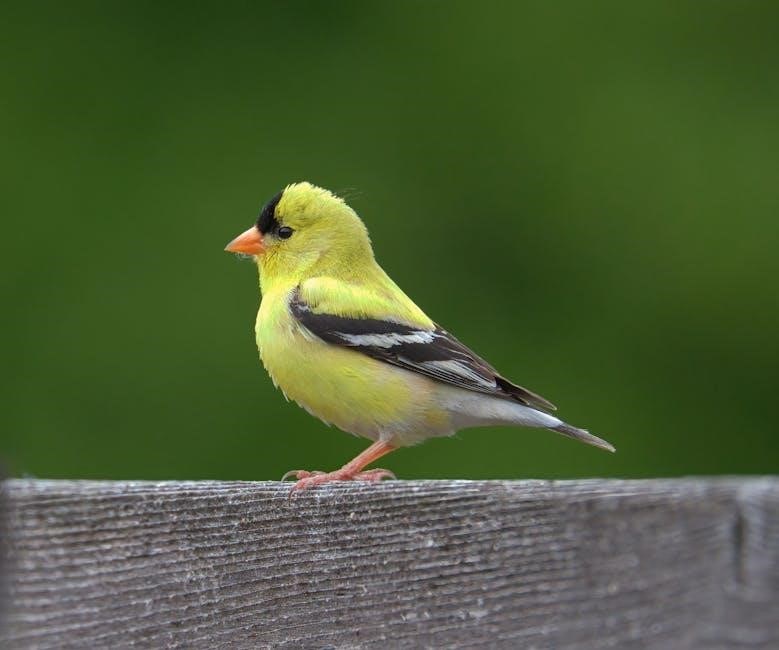
Practical Uses of Mossback Guides
Mossback Guides provide essential navigation techniques, survival strategies, and exploration insights, aiding adventurers in understanding natural environments while promoting sustainable practices and resourcefulness in diverse situations.
Navigation and Orientation Techniques
Mossback Guides provide expert navigation techniques, emphasizing compass use, map reading, and interpreting natural signs like trails, rivers, and mountain ranges. They highlight celestial navigation using the sun and stars, crucial for wilderness exploration. Additionally, the guides cover emergency strategies, such as finding north without a compass, ensuring adventurers stay oriented. These methods are particularly useful in the Pacific Northwest’s dense forests and coastal regions, aiding hunters and hikers alike. By blending traditional knowledge with practical skills, Mossback Guides enhance exploration and safety in diverse landscapes, making them indispensable for outdoor enthusiasts.
Survival Skills and Strategies
Mossback Guides emphasize practical survival techniques, such as building shelters, starting fires, and finding clean water. They highlight foraging for edible plants and navigating wilderness terrain. These guides also cover emergency preparedness, including signaling for help and managing injuries. The strategies are tailored to the Pacific Northwest’s unique environment, addressing challenges like rain and rugged landscapes. By focusing on sustainable practices, Mossback Guides ensure adventurers can thrive in nature while preserving ecosystems. Their approach blends traditional wisdom with modern methods, making them a vital resource for outdoor enthusiasts seeking to survive and explore responsibly.
Applications in Modern Exploration
Mossback Guides are invaluable in modern exploration, offering insights into navigation, ecology, and cultural heritage. They provide detailed maps and descriptions of remote areas, aiding researchers and adventurers. Available on PBS and the PBS App, they serve as a digital resource for planning expeditions. Their focus on sustainability encourages eco-friendly exploration, blending traditional knowledge with modern technology. By highlighting biodiversity and conservation efforts, Mossback Guides support responsible travel and scientific research. They remain a cornerstone for those seeking to explore and preserve the natural world, ensuring that exploration aligns with environmental stewardship and cultural respect.
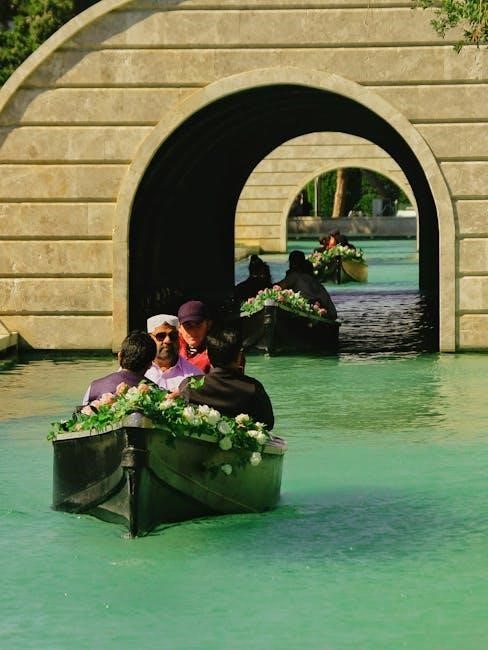
Mossback Guides in Media and Entertainment
Mossback Guides are featured in documentaries like Mossbacks Northwest on PBS, showcasing their cultural significance and ecological insights through engaging storytelling and visual narratives.
Representation in Literature and Film
Mossback Guides have captivated audiences through their portrayal in literature and film, blending storytelling with ecological insights. Documentaries like Mossbacks Northwest highlight their cultural and environmental significance. Literary works, such as those reviewed in Booklist, often weave their imagery into narratives of nature and resilience. These depictions not only entertain but also educate, fostering appreciation for biodiversity and regional heritage. By bridging art and education, Mossback Guides inspire a deeper connection to the natural world, making them a timeless subject in media and storytelling.
Documentaries and Educational Content
Mossback Guides are prominently featured in documentaries such as Mossbacks Northwest, available on PBS and the free PBS App. These documentaries provide in-depth exploration of their ecological significance and cultural importance. Educational content often highlights their role in biodiversity conservation and regional heritage. Through engaging storytelling and visual narratives, these programs educate audiences about the interconnectedness of nature and human communities. Such media serves as a vital resource for learning about Mossback Guides, inspiring both appreciation and stewardship of the environment they inhabit.
Popular Culture References
Mossback Guides have become cultural symbols, inspiring literature, film, and art. Their unique blend of natural history and human connection sparks creativity, appearing in works like science fiction and poetry. Composers and writers draw from their narratives, weaving tales of biodiversity and regional identity. In popular media, Mossback Guides symbolize resilience and harmony with nature, influencing themes in storytelling and artistic expression. Their presence in culture highlights the enduring appeal of their ecological and communal significance, making them a cherished subject across various creative platforms and genres.

Scientific Research and Mossback Guides
Mossback Guides are studied for their ecological significance, with research focusing on biodiversity, habitat preservation, and their role in maintaining regional ecosystems, offering valuable insights into conservation efforts.
Scientific Studies and Findings
Scientific studies on Mossback Guides have revealed their critical role in documenting rare species and habitats, providing valuable data for biodiversity conservation. Researchers collaborate with local communities to analyze ecological impacts, ensuring sustainable practices. These guides highlight the interdependence of flora and fauna, offering insights into ecosystem resilience. Findings underscore the importance of preserving natural habitats amid climate change. By combining traditional knowledge with modern science, Mossback Guides support informed conservation planning and environmental stewardship, fostering a deeper understanding of ecological balance and the need for protective measures to safeguard fragile ecosystems for future generations.
Research Methods and Tools
Research on Mossback Guides employs an interdisciplinary approach, blending traditional ecological knowledge with modern scientific tools. Field observations, GPS tracking, and ecological surveys are commonly used to gather data on biodiversity and habitat dynamics. Collaborations with local communities provide insights into historical and cultural contexts. Advanced technologies, such as remote sensing and multimedia documentation, enhance the accuracy and accessibility of findings. These methods ensure comprehensive and sustainable research practices, supporting both conservation efforts and educational initiatives. By integrating diverse tools and perspectives, researchers can better understand and protect the ecosystems highlighted by Mossback Guides.
Future Directions in Mossback Guide Research
Future research on Mossback Guides will focus on expanding interdisciplinary studies, integrating advanced technologies like AI and remote sensing to enhance data collection. Collaborations with local communities and educational institutions will deepen cultural and ecological insights. Efforts will prioritize sustainable practices, ensuring the preservation of biodiversity and habitats. Digital platforms will play a key role in disseminating findings, making research accessible to a broader audience; By fostering innovation and community engagement, Mossback Guide research aims to contribute meaningfully to conservation and education, ensuring a resilient future for these vital ecosystems and cultural resources.
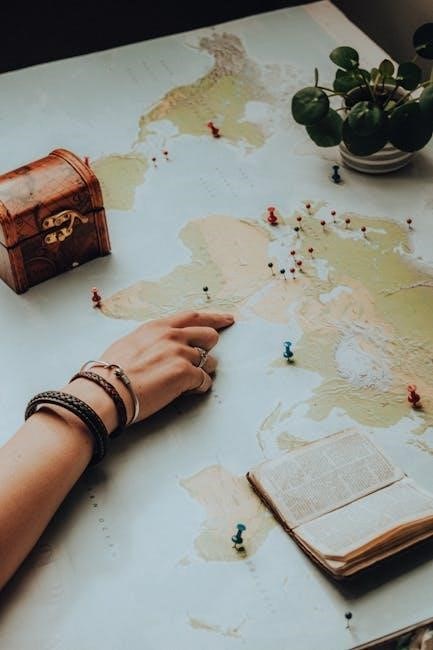
Challenges and Controversies
Mossback Guides face environmental challenges, ethical debates, and controversies over sustainability, balancing tradition with modern conservation needs, sparking discussions on responsible resource management and cultural preservation.
Controversies Surrounding Mossback Guides
The Mossback Guides have sparked debates over their environmental impact, with concerns about habitat disruption and resource exploitation. Critics argue that their practices, while rooted in tradition, may conflict with modern conservation goals. Additionally, ethical questions arise regarding the balance between cultural preservation and ecological sustainability. Some communities accuse the guides of prioritizing tourism over local needs, leading to tensions. Furthermore, the portrayal of Mossback Guides in media, such as documentaries, has been criticized for oversimplifying complex issues. These controversies highlight the need for dialogue and adaptive strategies to ensure their legacy endures responsibly.
Ethical Considerations
Ethical considerations surrounding Mossback Guides involve balancing cultural preservation with environmental stewardship. Ensuring sustainable practices is crucial to maintaining biodiversity and ecological integrity. Guides must adhere to responsible tourism, minimizing habitat disruption and promoting respectful interaction with natural and cultural sites. Ethical concerns also extend to community engagement, requiring fair representation and benefits for local populations. Transparency in operations and adherence to conservation laws are vital. Additionally, addressing the ethical implications of media portrayal ensures accurate and respectful representation. These considerations aim to preserve the legacy of Mossback Guides while fostering a harmonious relationship between tradition and modern ecological values.
Addressing Criticisms and Misconceptions
Critics argue that Mossback Guides may oversimplify complex ecological issues, potentially misleading audiences. Some question their scientific accuracy, suggesting a need for more rigorous research backing. Misconceptions arise from their portrayal in media, where they are often romanticized, overshadowing real challenges. Addressing these criticisms involves enhancing transparency in methodology and fostering collaboration with experts. By incorporating diverse perspectives and ensuring factual accuracy, Mossback Guides can better serve educational purposes. Open dialogue with critics and continuous improvement are essential to maintain credibility and trust in their role as environmental and cultural advocates.
Mossback Guides serve as a vital bridge between nature and culture, offering educational insights while fostering environmental advocacy and community engagement for future generations to cherish and protect.
Mossback Guides are a unique blend of cultural heritage and environmental advocacy, offering insights into the Pacific Northwest’s biodiversity and history. They serve as educational tools, fostering community engagement and ecological awareness. Available on platforms like PBS, they highlight the region’s natural beauty and historical significance. Mossback Guides also address challenges such as conservation efforts and sustainability, emphasizing the importance of preserving ecosystems. Their role in storytelling and regional identity underscores their value as both informative and inspirational resources for future generations.
Future Prospects for Mossback Guides
Mossback Guides hold promising potential for future growth, particularly in digital platforms and educational initiatives. Their role in conservation and storytelling could expand, fostering deeper community engagement. Emerging technologies might enhance their accessibility, making them more interactive and widely available. Collaborations with environmental organizations and educators could further their impact. Additionally, their cultural significance could inspire new generations to explore and protect the Pacific Northwest’s heritage. By leveraging modern tools and partnerships, Mossback Guides can continue to thrive as vital resources for environmental stewardship and cultural preservation.
Final Thoughts and Recommendations
Mossback Guides represent a vital link between tradition, ecology, and community. To ensure their continued relevance, it is essential to promote educational initiatives and expand digital accessibility. Encouraging collaboration with environmental organizations can amplify their impact. Additionally, fostering community engagement through workshops and events will help preserve their cultural significance. By supporting conservation efforts and embracing new technologies, Mossback Guides can inspire future generations to value and protect the Pacific Northwest’s heritage. Embracing these strategies will ensure their legacy endures as a cornerstone of regional identity and environmental stewardship.